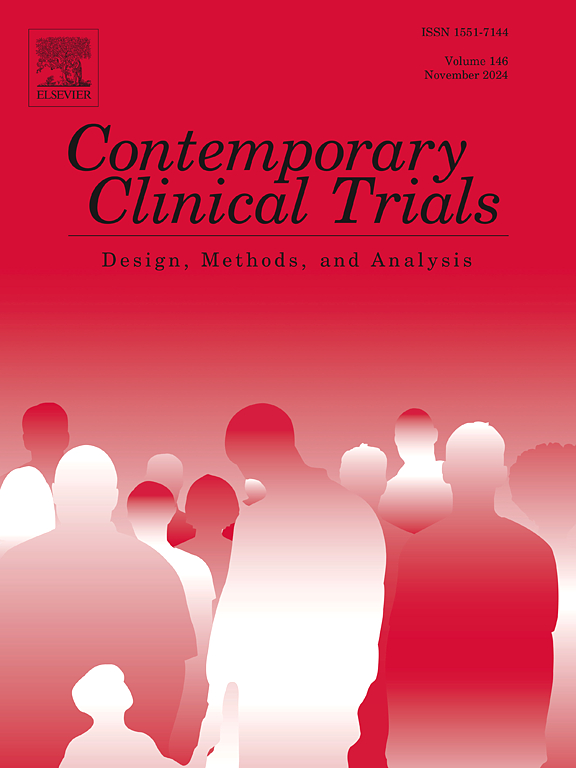选择性剖宫产新生儿膝关节胸屈手法减轻呼吸窘迫的有效性:随机对照试验方案。
IF 1.9
3区 医学
Q3 MEDICINE, RESEARCH & EXPERIMENTAL
引用次数: 0
摘要
背景:剖宫产(CS)分娩是足月和近期婴儿呼吸窘迫(RD)的危险因素,在全球范围内一直在稳步增加。缺少分娩与计划生育导致的RD有关。子宫收缩导致胎儿背屈体位,增加腹部和经肺压力,导致经鼻和口的肺液流失。我们最近证明了应用膝胸屈(KCF)的可行性和安全性,其中新生儿被放置在弯曲的“胎儿”位置,导致肺部液体排出。在本试验中,KCF操作在减少计划CS分娩婴儿RD中的有效性将被检查。方法:这将是一项随机对照的双臂试验,521名37-42 周孕龄的选择性CS出生的婴儿将按1:1的比例随机接受KCF操作或标准护理,然后随访至少24 小时。这项研究将在坦桑尼亚的乞力马扎罗山基督教医疗中心医院和马文齐地区转诊医院进行。在随机化之前,将征求计划进行选择性CS的母亲的同意。主要结局是发生呼吸窘迫。次要结局是进入新生儿护理病房。讨论:本试验探讨了KCF操作作为促进计划CS出生的新生儿肺液清除的干预措施。预计将产生证据,证明KCF是一种高成本效益的创新,将改善临床环境中的新生儿结局。试验注册号:ClinicalTrials.gov: NCT06270823。本文章由计算机程序翻译,如有差异,请以英文原文为准。
The effectiveness of knee-chest-flexion maneuver in reducing respiratory distress in elective cesarean section newborns: protocol for a randomized controlled trial
Background
Cesarean section (CS) birth is a risk factor for respiratory distress (RD) in term and near-term infants, which has been steadily increasing globally. The absence of labor has been linked to RD resulting from planned CS births. Uterine contractions contribute to the dorsiflexed position of the fetus which increases abdominal and trans-pulmonary pressure resulting in lung liquid loss via nose and mouth. We recently demonstrated the feasibility and safety of applying Knee-to-Chest Flexion (KCF), where the newborn was placed in a flexed “fetal” position, leading to lung liquid expulsion.
In this trial, the effectiveness of the KCF maneuver in reducing RD in infants delivered by planned CS will be examined.
Methods
This will be a randomized controlled two-arm trial in which 521 infants born by elective CS at 37–42 weeks gestational age will be randomized, in 1:1 ratio, to receive either a KCF maneuver or standard care, before being followed up for at least 24 h. The study will be conducted at Kilimanjaro Christian Medical Centre hospital and Mawenzi Regional Referral hospital in Tanzania. Consent will be sought from mothers scheduled for elective CS prior to randomization. The primary outcome is the occurrence of respiratory distress. Secondary outcome is admission to Neonatal Care Unit.
Discussion
This trial investigates KCF maneuver as an intervention to facilitate lung liquid clearance in newborns born by planned CS. It is anticipated to produce evidence of KCF as a highly cost effective innovation that will improve neonatal outcomes in clinical settings.
Trial registration number: ClinicalTrials.gov: NCT06270823
求助全文
通过发布文献求助,成功后即可免费获取论文全文。
去求助
来源期刊
CiteScore
3.70
自引率
4.50%
发文量
281
审稿时长
44 days
期刊介绍:
Contemporary Clinical Trials is an international peer reviewed journal that publishes manuscripts pertaining to all aspects of clinical trials, including, but not limited to, design, conduct, analysis, regulation and ethics. Manuscripts submitted should appeal to a readership drawn from disciplines including medicine, biostatistics, epidemiology, computer science, management science, behavioural science, pharmaceutical science, and bioethics. Full-length papers and short communications not exceeding 1,500 words, as well as systemic reviews of clinical trials and methodologies will be published. Perspectives/commentaries on current issues and the impact of clinical trials on the practice of medicine and health policy are also welcome.

 求助内容:
求助内容: 应助结果提醒方式:
应助结果提醒方式:


